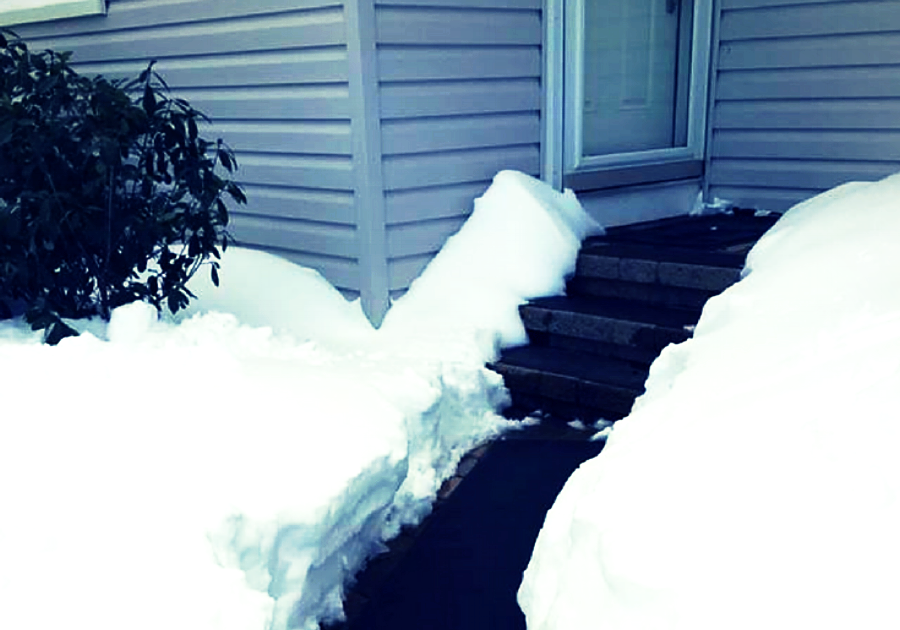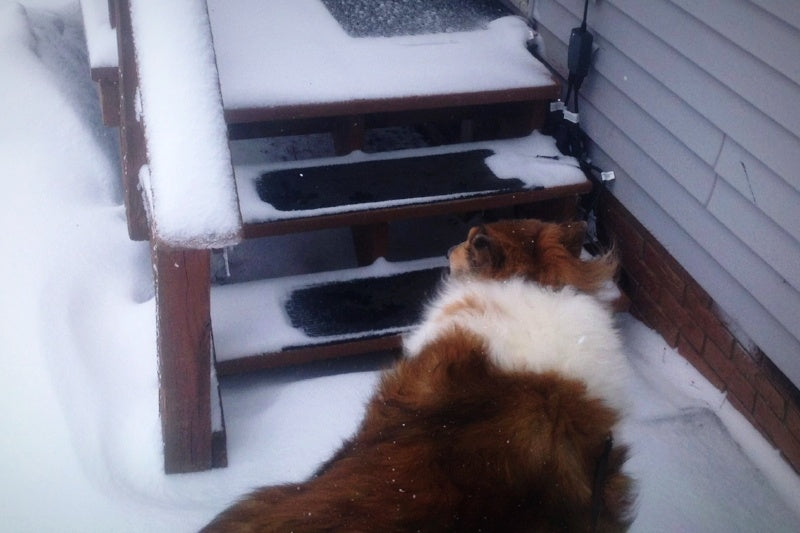
Rock salt is easily the cheapest option when it comes to melting snow and ice on U.S. roadways as well as on pavements at U.S. homes. Over a third of the salt sold in the United States every year is rock salt, which is basically the as-is salt mined from natural salt deposits left underground by "ancient oceans."
Rock Salt Damages Your Pavements and Landscaping
However, while rock salt is relatively inexpensive, accessible, and easy to apply, its use also brings with it a number of negative consequences.
First, rock salt (calcium chloride) does more than just melt the snow/ice on your driveway and other pavements. It also infiltrates the porous surface of your concrete and lodges, more or less permanently, inside. This might not be a problem in itself, except that salt is acidic enough to lower the pH level of concrete and render it more prone to deterioration. Salt crystals inside of concrete also has the effect of drawing water toward them and of increasing the saturation potential of concrete by 9%. Finally, if there are any uneven spots on your concrete pavement's surface, melt-off water will tend to collect there and seep slowly into the pavement below.
The end result is that water-laden concrete is cracked and spalled by internal pressures and surface abrasion caused by the expansion of water as it freezes into ice. The more freeze-thaw cycles in a winter, the worse the damage will be.
Asphalt surfaces also suffer from the salt/water infiltration and freeze-thaw cycles, though not quite as much as does concrete. Brick and stone used in home walkways and landscaping paths suffer a similar fate.
Grass, trees, flowers, bushes, and other vegetation planted near pavements where rock salt is applied will also often be damaged/killed off. The tell-tale sign is leaves, twigs, branches, or even the whole plant browning and dying. Salt absorbed in snow-melt run-off gets into the soil along pavements and causes plants to reach excessive internal salt levels. Since plants cannot "sweat off" salts like animals, they have to shed leaves/twigs. Salt also reduces soil quality and attracts water to itself, which makes it harder for root systems to pull the water into the plant.
Alternatives to Rock Salt for Melting Snow and Ice
If rock salt is not to be used, then some alternative methods of melting snow and ice and maintaining safe walking/parking areas on your premises must be found.
Here are some of the main options:
-
Use a different deicer: Calcium chloride, which is more effective at lower temperatures than rock salt and does less damage to concrete is one popular option. Urea is one of the safest deicers for plant life since it does not contain chloride. CMA (calcium magnesium acetate) does less damage to pavements/plants than rock salt, but it is better at preventing refreezing than at initial melting. There are many deicers available today, each with its pros and cons and each at a different price range.
-
Focus on mechanical removal: Using deicers minimally, and even mixing them with sand to dilute them and increase traction, is an option. Use enough chemical deicer to loosen ice and pre-brine pavements so snow does not stick and less deicer is needed later. Shoveling, snow blowing, and plowing then finish the job. The health risks of snow shoveling, the expense of plows/blowers, and the cost of hiring others to manually remove snow/ice are all potential drawbacks.
-
Install a heated driveway: Snow-melt systems under driveways, and sometimes also under walkways/sidewalks, are a great convenience. Simply turn them on as needed or pre-set them to activate automatically at certain times of day or at specific temperatures. No shoveling or salting will be needed to maintain the necessary snow and ice free areas. However, thousands of dollars must be invested to put in a new driveway that incorporates heating coils or hydronic heating tubes.
- Use seasonal snow-melt mats: Snow melting mats provide a clear, dry, slip-resistant surface to walk on. They can be installed at entryways, along walkways, on outdoor stairs, and even as a tire lane on driveways. Snow melting mats essentially give you the convenience of a heated pavement at a lower cost and with the ability to remove and store the mats seasonally.
In summary, we can say that rock salt creates at least as many problems as it solves, making it desirable to find an alternative deicing method. Alternate chemical deicers are superior to rock salt in some respects but cost more. Mechanical removal is cheap and safe for your pavements/plants but presents dangers such as hypothermia and accidental slips and falls. Heated driveways are a convenient solution but one that has high upfront costs. Snow melting mats are good for providing a snow/ice free zone without reconstructing your pavements.


